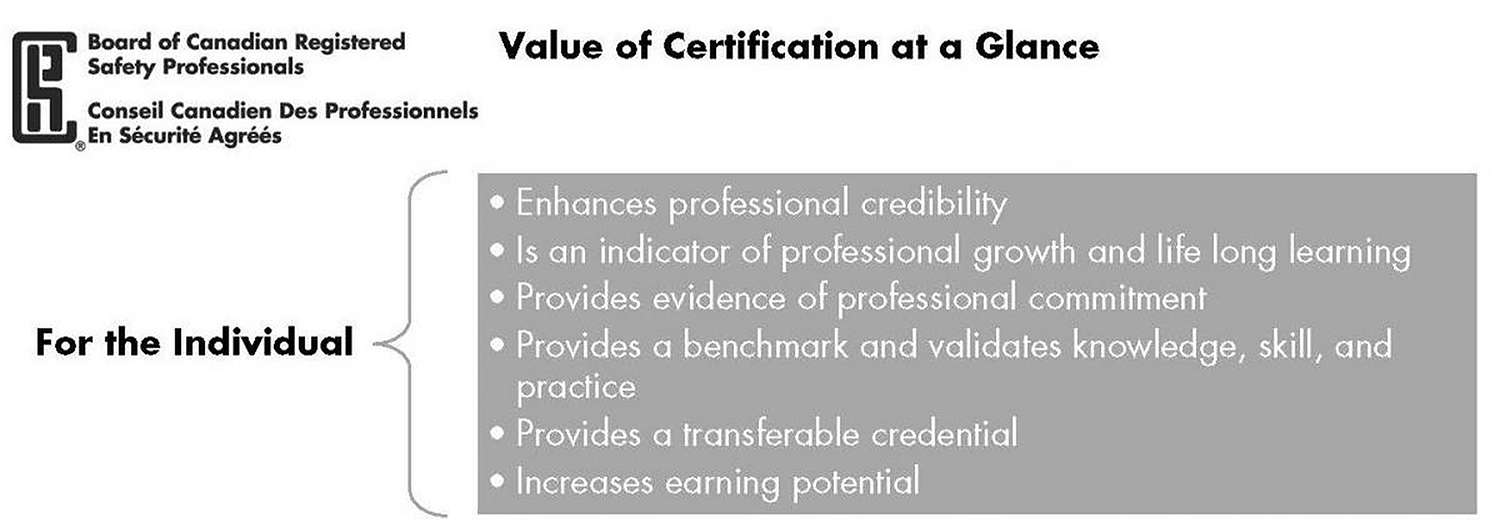
Since it was established in 1976, the Board of Canadian Registered Safety Professionals (BCRSP) has certified over 6000 OHS professionals across Canada. But is certification necessary to be a practicing health and safety professional?
This question may sound vaguely familiar, as not too long ago we explored the necessity and benefits about obtaining a health and safety education.
And again, the short answer is no. There is no legal obligation for a safety professional to have a CRSP accreditation. However, it is becoming a standard requirement for many OHS positions. Like many organizations and industries before it, the BCRSP is attempting to establish a national standard for OHS professionals. With CRSPs becoming an increasingly in-demand prerequisite for work in the industry, the BCRSP is creating a stronger health and safety network that stretches across the country.
So, whether you are a health and safety worker looking to advance your career, or an employer looking for a new OHS professional to join your team, it's worth understanding the process and how it can benefit you.
What is a CRSP?
A CRSP (Canadian Registered Safety Professional) is a designation that identifies individuals who have met the requirements established by the Board of Canadian Registered Safety Professionals (BCRSP). It means that a safety professional has demonstrated that they possess the knowledge and experience to analyze and develop proper safety systems to mitigate and control hazards in the workplace.
What are the benefits of a CRSP?
Like many certifications, everyone benefits from them in a different way. For many workers, certifications are more than a workplace requirement. They can often be a source of pride and accomplishment, especially when they require the time and effort that a professional certification entails. However, they also benefit employers, clients, and other OHS professionals.
The BCRSP has used their years of data and feedback to put together the graph below to more clearly demonstrate the benefits associated with CRSP certifications on an individual level, an organizational level, and lastly, a professional level.



In other words, even though a CRSP is an individual accomplishment, it can have a significant impact on employers and other professionals by helping create a more competent network of OHS managers in the field.
How do I get a CRSP?
So now that we understand what a CRSP is, let's discuss the application process. Becoming certified is a multistep process that can take some time. In fact, it begins with your very first decisions regarding your career in Occupational Health and Safety. Before you even consider applying for a CRSP, make sure you meet the following criteria:
- A minimum of a Bachelor's degree (4-year) in any field* OR a 2-year diploma (or certificate) (minimum of 900 hours or 60 credits) in occupational health and safety or a closely related field from a recognized academic institution.
- At least four (4) years of experience where occupational health and safety is at least 50%, preventative, professional level with breadth and depth of health and safety duties. Experience must be within the last 5 years.
Once you know you meet the minimum requirements, you are ready to start the official application process. You can find a detailed overview of the process by visiting the official BCRSP website.
The final verdict?
So is the process worth it? It definitely can't hurt. A certification can open a lot of doors for you professionally, and tell prospective employers a lot about you as a worker. Presenting yourself to an employer with a CRSP in hand shows that you are passionate about what you do, you are committed to your profession, and that you believe that health and safety practices can always be better.
Still have questions?
Let our knowledgeable sales team give you a full product tour and answer any specific questions you may have.
Workhub Internal